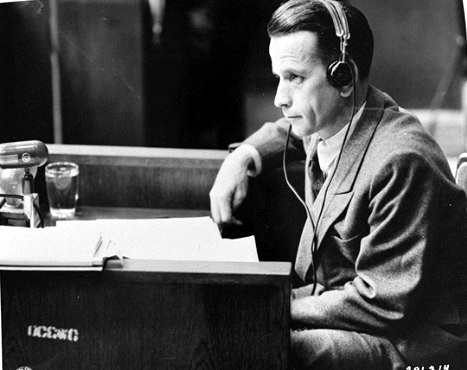Ruins at Buchenwald Concentration CampAlthough the former Buchenwald concentration camp was used until 1950, by the occupation forces of the Soviet Union, as an internment camp for German citizens suspected of being political opponents of Communism, the camp gave me the impression of being an ancient Roman ruin. The 15 brick buildings in the camp were torn down by the Soviet occupiers and now only their foundations are still visible. There were many ceramic tiles from the medical buildings littering the ground when I visited in 1999, but nothing else remains of the place where Nazi doctors did experiments on the prisoners in an attempt to find a typhus vaccine. Virtually everything in the Buchenwald concentration camp has been demolished, but when the camp was in operation, there were rows of wooden barracks separated by what one survivor called "immaculate walks." There were washrooms for the prisoners with rows of wash basins, hot running water and flush toilets. According to a survivor, the prisoners would smoke in the toilets. There was a mess hall with long tables and benches for the prisoners' meals. The photo below shows one of the former guard towers that was not completely torn down. In the foreground of the picture, you can see the grass-covered rubble from the partial demolition of the tower, and to the left are the fence posts of the electrified barbed wire fence which surrounded the camp. Some of the original fence posts have been replaced by reconstructed posts. The fence was lighted by bare bulbs at night. One of the 15 brick buildings in the camp was Block 50, the remains of which are shown in the picture below. When this building was completed in the fall of 1939, it was first used as a barracks for Polish political prisoners after the German conquest of Poland in September 1939. In 1943, the building was remodeled for use as a facility for medical experiments. The following quote is from the Buchenwald guidebook: The Hygiene Institute of the Waffen-SS started production of serum against typhoid the same year (cf. Block 46). The block was enclosed with a fence and provided with a separate entrance. The building contained a host laboratory for physicians of the German army (e.e. the Wehrmacht), of the Waffen-SS and of the Robert-Koch-Institute which participated in the experiments on human beings carried out in block 46. The photograph below shows a closeup of the ruins of the Hygiene Institute. Near these ruins there is an apple tree, and when I visited in October 1999, there were apples on the ground that had fallen from the tree. Note the remains of two flush toilets in the photo below. The Medical experiments conducted in Buchenwald were nothing unusual. The Nazis took advantage of the opportunity to carry out experiments on condemned prisoners in several of the concentration camps, including Dachau and Sachsenhausen. The results of some of these experiments were confiscated and used by America after the war.  Home |